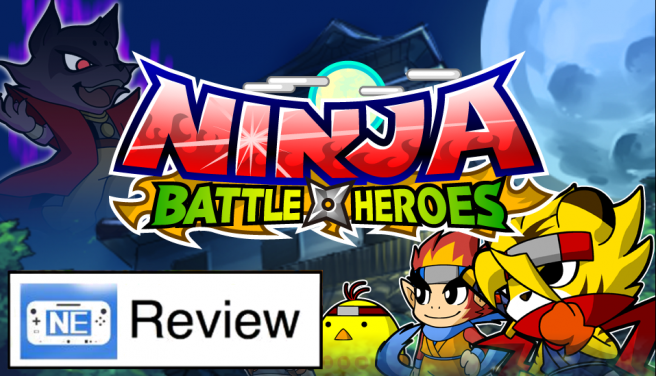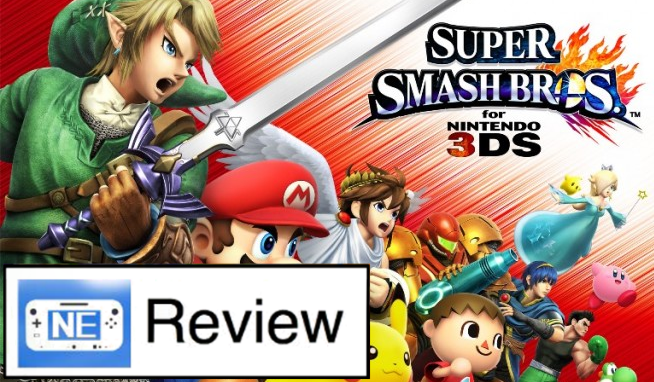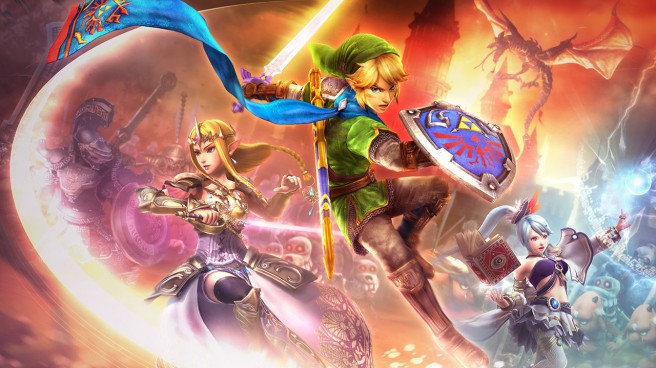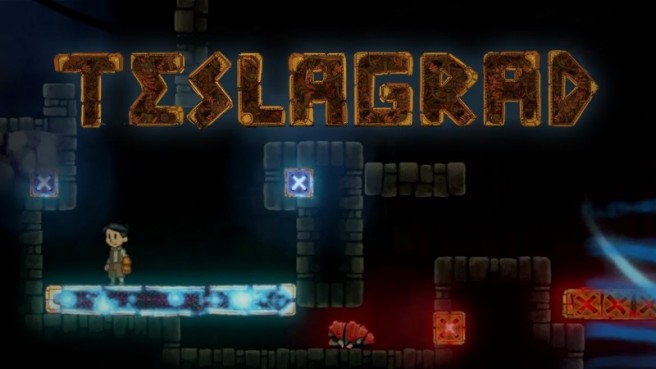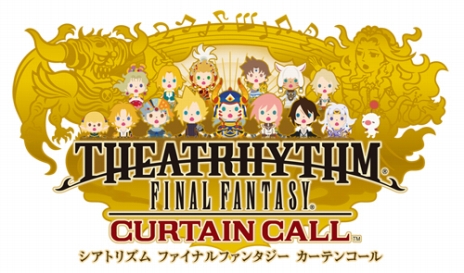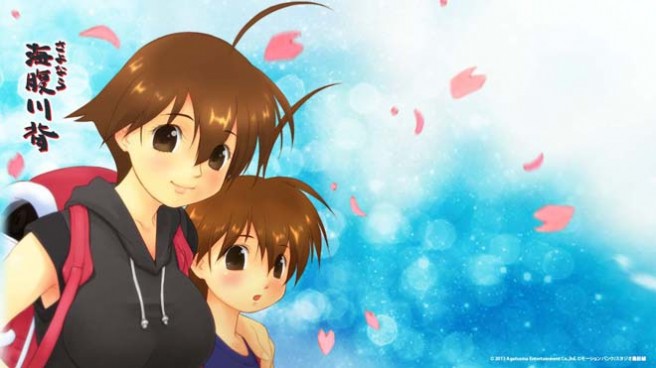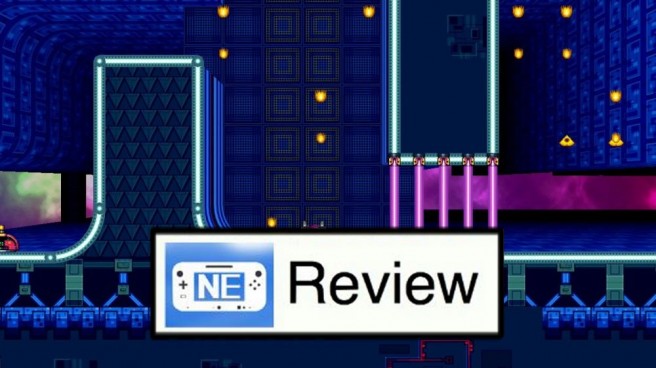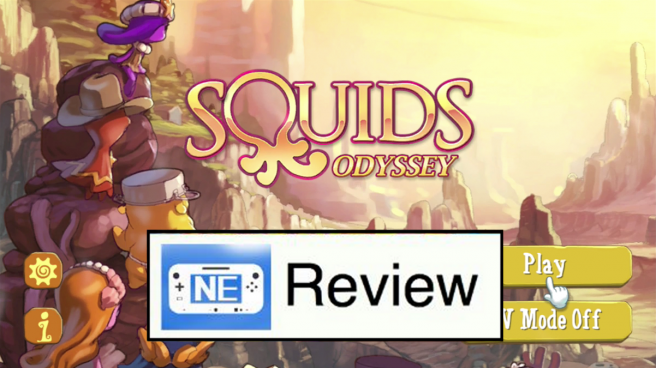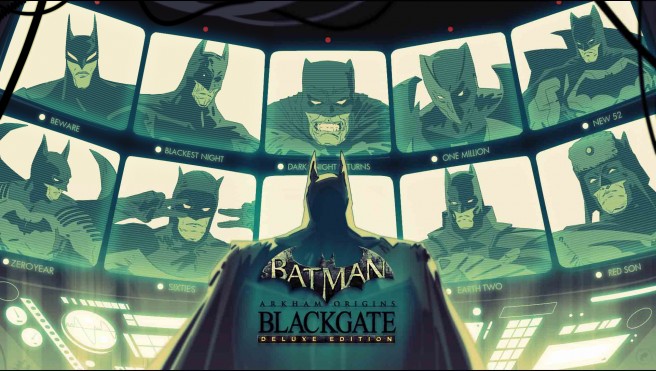[Review] Ninja Battle Heroes (3DS)
Posted on 10 years ago by Vincent Ward in 3DS eShop, Features, Reviews | 2 Comments
System: Nintendo 3DS
Release Date: October 9th, 2014
Developer: Tom Create
Publisher: Tom Create
Author: Vincent W.
If someone were to write a book on terrible game design, I feel as if Ninja Battle Heroes would be one of the main examples. Aside from its terribly uncreative title, this 3DS eShop game looks pretty appealing on the surface. Boasting a heavily Japanese-inspired universe along with a unique platforming experience, Ninja Battle Heroes seems like it could provide a small but desperately needed breath of fresh air to a genre that’s been long in need of one. Once inside, however, you’ll find a game that takes all of its interesting ideas and executes them poorly.
More: highlight, Ninja Battle Heroes, top
[Review] Super Smash Bros. for Nintendo 3DS
Posted on 10 years ago by Patrick(@Patricklous) in 3DS, 3DS eShop, New Nintendo 3DS, Reviews | 11 Comments
System: Nintendo 3DS (what a shock)
Release Date: October 3, 2014
Developer: Sora Ltd/Bandai Namco Games
Publisher: Nintendo
Author: Patrick
The long-awaited fourth entry in Nintendo’s crazy crossover series is finally out, but it finds itself on a curious platform – the 3DS. A multiplayer fighting game is a strange fit for the portable console, but this new instalment retains the addictive style of fighting and throws in a few new ways to battle. Even on the 3DS, the frenetic pace of previous entries is still present (to an extent – this ain’t Melee) and Smash is still very much an experience accessible to both newcomers and seasoned players, with plenty of weird Nintendo references, of course. As a sequel, the game promises more of everything: more characters, more items, more assist trophies, more stuff to collect… the problem is that in some cases Smash on the 3DS feels like a lesser game than the ones that’ve come before it. Make no mistake, the game is still an incredibly enjoyable time, especially with a few friends, but the series makes the jump to the 3DS with a couple of compromises.
More: 3DS, highlight, review, Smash Bros., top
[Review] Hyrule Warriors (Wii U)
Posted on 10 years ago by Vincent Ward in Features, Reviews, Wii U, Wii U eShop | 7 Comments
System: Wii U
Release Date: September 26, 2014
Developer: Koei Tecmo
Publisher: Nintendo
Author: Vincent
Calling me a Legend of Zelda fan would be a bit of an understatement. If you were to step into my room, you’d be blinded by the posters and merchandise scattered from one wall to another, all finished off with my saddening number of physical Zelda titles. So with the announcement of Hyrule Warriors during last December’s Nintendo Direct, I was nothing short of excited; providing an excuse for having our beloved Zelda worlds and characters collide in one epic horde fighting action game sounds like a dream come true, and every day I spent waiting for the game felt like an eternity. Now that I’ve sped my way through this long journey over the past week, I can safely say my excitement was placed in good hands.
More: highlight, Hyrule Warriors, Koei Tecmo, top
[Review] Teslagrad (Wii U eShop)
Posted on 10 years ago by Vincent Ward in Features, Reviews, Wii U, Wii U eShop | 0 comments
System: Nintendo Wii U
Release Date: September 11th, 2014
Developer: Rain Games
Publisher: Rain Games
Author: Vincent
“Magnetizing and satisfying”
In a market filled to the brim with 2D platformers, it’s hard to stand out from the crowd; it seems as if, unless your character is sporting some overly familiar overalls and a fancy brown mustache, you’ll never be noticed. Those odds didn’t stop newly-made studio Rain Games from taking a shot in the dark with Teslagrad, a platformer that uses unique storytelling and gameplay to rise above the rest. But does this all blend together to create an experience worth checking out, or is it better left alone?
As soon as you start up the game, you’re presented with the opening menu showing the main character’s father carrying a baby walking through a dark town. Once you hit Start Game, it makes the seamless transition into gameplay where he hands off the baby to the mother. Time goes by and the town you live in becomes overrun, forcing your mother to let you out the back door as you take control over the now grown up young boy. You run through the town amidst a rainstorm as soldiers chase you down, and you climb atop buildings and through alleyways to escape, all leading up to the young protagonist taking shelter in an abandoned tower, which he then discovers has more than meets the eye.
Now, this isn’t all spoon-fed to you with numerous boxes of texts or someone yelling in your ear telling you what the soldiers names are. The game instead chose to feature no text or full on voice acting throughout the five hour adventure. All you have is the ambient soundtrack and character grunts to accompany you throughout your journey as you have the world around you unfold and tell the story little by little.
More: highlight, Rain Games, review, Teslagrad, top
[Review] Theatrhythm Final Fantasy: Curtain Call
Posted on 10 years ago by Vincent Ward in 3DS, Features, Reviews | 5 Comments
System: Nintendo 3DS
Release Date: September 16th, 2014
Developer: indieszero
Publisher: Square Enix
Author: Vincent
“More than your average RPG Final Fantasy Rhythm Game”
Back in 2012, Square Enix took it upon themselves to celebrate the Final Fantasy’s 25th anniversary by creating a rhythm-based game that involves some of the best soundtracks in gaming. That game was the 3DS title Theatrhythm Final Fantasy, which was incredibly well-received and praised. Two years have passed, and now Square is at it again with Theatrhythm Final Fantasy: Curtain Call – another take on the rhythm based series. Featuring new music, updated visuals, and new gameplay modes, does this game offer enough to be on par with the rest of the franchise? Ir is this game a fantasy gone wrong?
[Review] Sayonara Umihara Kawase
Posted on 11 years ago by Patrick(@Patricklous) in 3DS, 3DS eShop, Features, Reviews | 3 Comments
System: Nintendo 3DS eShop
Release Date: April 24, 2014 (EU)
Developer: Agatsuma Entertainment
Publisher: Agatsuma Entertainment/Natsume
Author: Patrick
Sayonara Umihara Kawase’s title might suggest a farewell to this series, but for most players it’s more like a welcome to this bizarre world full of freakish fish and perilous platforming. While the first two Umihara Kawase games never left Japan, they managed to become cult classics thanks to their mix of unforgiving but addictive gameplay and some good old-fashioned weirdness. As a return to the series’ distinctive tone and action, Sayonara Umihara Kawase initially seems geared to hardcore fans, but it also manages to serve as a more gentle introduction to its unique style of platforming —before throwing players into the deep end of a pool full of acid.
As far as I’m aware there aren’t any major differences between the European version, which I played, and the Natsume-published North American version. Well aside from the fact that it was re-titled to “Umi’s Odd Odyssey”, because Natsume just have to alter the name of everything they localize. Just be glad they didn’t call it Legend of the River King Gaiden or Spanky’s Quest.
[Review] Scram Kitty and His Buddy on Rails
Posted on 11 years ago by Jack Johnson(@tupachologram96) in Features, Reviews, Wii U, Wii U eShop | 1 Comment
System: Nintendo Wii U
Release Date: May 15th, 2013 (NA, EU)
Developer: Dakko Dakko
Publisher: Dakko Dakko
Author: Jack
I hate it when people label things incorrectly. It makes me very sad and upset. I can’t tell you how much compound irritation I’ve had to repress when, say, someone would write the wrong name down on an online order at work and offer me the duty of rectifying the situation over the phone with Mrs. Jihnson and her missing mail-order appliance, or when a past roommate not-to-be-named would intentionally label the cat food ‘dog food’ just to try to make me sick the next day.
This is why I possess such a vitriol for relatively new Welsh developer Dakko Dakko and their latest attempt at capturing the burgeoning Wii U indie scene (think Mutant Mudds, Cloudberry Kingdom, and all of the other titles I’ve referenced way too much in writing and on the podcast), Scram Kitty and his Buddy on Rails, a 2D shooter with strong open-world platforming elements. The ‘On Rails’ signifier at the end there implies imprison-y, limited bounds and pointed, one-dimensional gameplay design, whereas Scram Kitty, in its comparative sense of freedom to the recent litany of top-notch platformers we’ve seen reach the eShop, feels anything but. Scram Kitty, though confusing in name, scratches an itch not satiated fully by its contemporaries on the platform. By not being as singularly masterful in its level design elements as, say, VVVVVV or Mighty Switch Force!, Scram Kitty feels a little less uptight and neo-retro, yet crucially still achieves the same level of “old-school hardcore” as those luminaries do. I will not use any cat puns in this review.
[Review] Squids Odyssey (Wii U eShop)
Posted on 11 years ago by Austin(@NE_Austin) in 3DS, 3DS eShop, Features, Reviews | 2 Comments
System: Nintendo Wii U
Release Date: May 22nd, 2014 (NA/EU)
Developer: The Game Bakers
Author: Austin
Almost three thousand years ago, a shy fellow (I don’t know if he was shy) named Homer lived in Greece, and he wrote two really famous epic poems: The first– The Illiad— is thought to be the oldest surviving piece of western literature ever. The second– The Odyssey— is just as famous, and this week, nearly three millennia after its initial writing, The Game Bakers have created a work directly inspired by the work of Homer for the Wii U eShop. It’s called Squids Odyssey.
Most of what is written in the paragraph above isn’t true. Squids Odyssey does exist, but it’s not a game based around Homer’s Odyssey— no, it’s a creative and unique turn-based strategy game set far beneath the surface of the ocean that’s unfortunately marred by a lack of technical polish and attention. Still, it may be worth your time; read on for details.
More: 3DS, eshop, highlight, review, Squids Odyssey
[Review] Kirby Triple Deluxe (3DS)
Posted on 11 years ago by Spencer(@spencerstevens) in 3DS, Features, Reviews | 8 Comments
System: Nintendo 3DS
Release Date: May 2nd, 2014 (NA), May 16th, 2014 (EU)
Developer: HAL Laboratory
Publisher: Nintendo
Author: Spencer
Everyone’s favorite pink puff has finally returned in his first adventure on the Nintendo 3DS, Kirby: Triple Deluxe.
Out of the box, Triple Deluxe consists of three gameplay modes: Story Mode, Kirby Fighters, and Dedede’s Drum Dash. The Story Mode is straightforward: Dreamland is in danger, and it’s up to Kirby to save the day. This time, a mysterious new villain has uprooted Kirby’s home with massive magical vines and sent everything sky-high! Players navigate Kirby through many levels in seven worlds as he makes his ascent to the top of the menacing entanglement.
More: 3DS, highlight, Kirby Triple Deluxe, review
[Review] Batman: Arkham Origins Blackgate – Deluxe Edition (Wii U)
Posted on 11 years ago by Jack Johnson(@tupachologram96) in Features, Reviews, Wii U, Wii U eShop | 4 Comments
System: Wii U
Release Date: April 3rd, 2014
Developer: Armature Studios
Publisher: Warner Bros. Interactive
Author: Jack
Think prison life’s bad? Having been there twice already, let me tell you, it’s worse than what the movies and books would have you think. Imagine having to shape your masticatory and gastrovascular secretionary actions around predetermined intervals of time throughout the day, with no exceptions. Imagine a life devoid of privacy in being forced to share a toilet bowl in a confined space with a burly ex-construction worker named Red. Now, with that gruesome reality in mind, picture being in a prison taken over by three maniacal super-convicts bent on causing mayhem and destruction upon their escape. Seems like just enough to drive you over the deep end, right? Well, in Batman: Arkham Origins Blackgate — Deluxe Edition for Wii U, you, the player, as the eponymous Batman, find yourself in that very peculiar predicament.
